Ivy Brown and Her Gallery
A visit with the woman who has showcased artists in her Meatpacking District apartment for 20 years
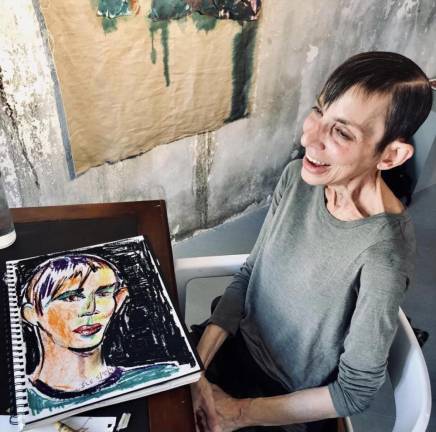
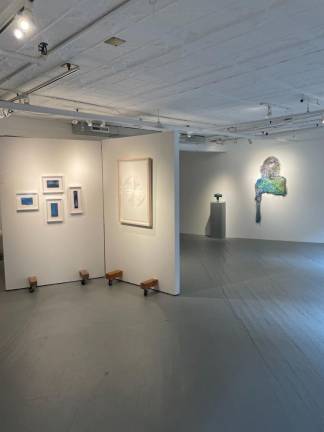
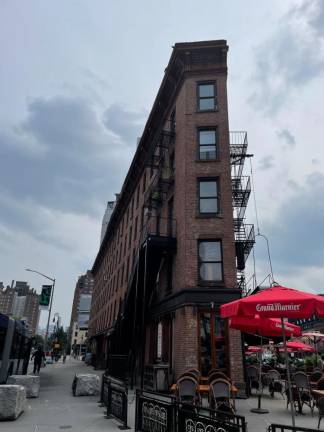
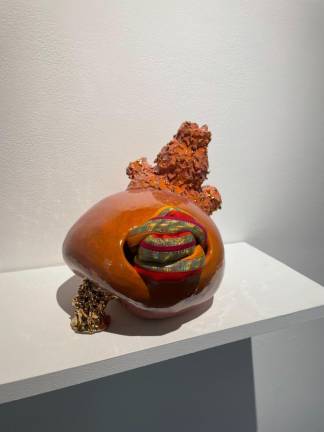
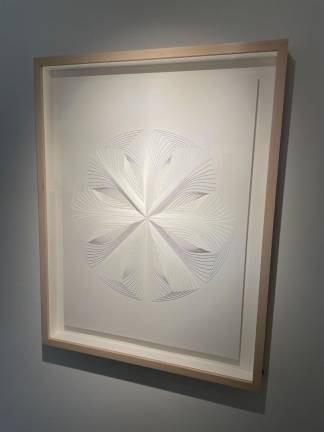
Her two dogs, Buster and Keaton, greeted me at the door with assertive barks but a gentle demeanor. They appreciated my affection and reciprocated with a few friendly licks. She led me inside, offered me a glass of iced tea with honey, and I began to investigate the artwork, purposefully spaced throughout the gallery. I immediately felt at home.
Ivy Brown’s 1800-square-foot triangular apartment, splitting Ninth Avenue and Hudson Street, has been her home since 1985 and the home for her showcased artists for 20 years. We talked for a couple of hours about the history of her apartment and her work: The Ivy Brown Gallery.
Brown found the listing for her apartment in an issue of the Village Voice 36 years ago. The listing had been up for three weeks. The building was a former Civil War hospital. It was located in the Meat Market, surrounded by streets drenched with blood and bins of “inedibles,” with a reeking stench that proved to be unpopular with New York City real estate hunters at the time. After living with the smell of bloody carcasses, Brown says she will never eat a piece of meat again.
“There was no reason to come here unless you were a meat packer or going to a club,” said Brown, explaining the reasoning for the area’s unpopularity at the time.
Back in the 1980s, the Meatpacking District was not the hip, bustling, Instagrammable hot spot it has become. In fact, Brown described the streets of her neighborhood to be eerily cinematic. She provided a vivid portrait of the surrounding area: countless masked men dressed in blood-stained white lab coats hanging bloody animal carcasses on a moving conveyor, casting ghostly shadows on the pavement below. It seemed almost as if she was describing a masterfully composed shot from the latest big-budget studio thriller.
Her apartment sits on the fourth floor of the Triangular Herring Building. In the ‘80s, the basement of the building was the spot for three sex clubs, including one called Hell Fire, which Brown was convinced to go to once and never again. She said her parents were beyond perturbed by their daughter’s neighborhood.
Needless to say, the area has changed so much since Brown first moved in. In a report by US News, New York City was listed number three on the list of cities with the highest intensity of gentrification. When I asked Ivy Brown about her opinions surrounding the gentrification of her neighborhood, she replied with a statement of positivity.
“When it comes to change, I try to stay as fluid as possible,” said Brown. “I miss the old neighborhood. There was a different sense of creativity and community. However, I just try to be thankful for the space.”
Fear and Uncertainty
Talking about the difficulties of the pandemic year, Brown said her 2020 was also “a bit of a drag.” She had never seen the city so still and silent. During the pandemic, she said that her emotions ranged from fascination to fear to uncertainty. She was hardly able to sleep.
“The silence was so loud,” said Brown.
The element of silence directly inspired Brown’s first art show, post-pandemic, titled “Can you hear the silence?” The exhibition asks the viewers a question. What does your silence sound like? Is it a sound, a thought, a feeling?
Brown believes she has especially good instincts when it comes to finding artists and says that curating an art gallery is more complicated than it seems. “The art needs to inspire me,” said Brown, who studied sculpture and has often gravitated to 3D art. “I love artwork that is unique and timeless.” She pointed to a small clay sculpture by a Brooklyn-based artist named Ak Jansen, sitting on her desk, and said she could look at it every day for the rest of her life.
Jansen is from the Netherlands and has lived in New York for six years. This year, he graduated with an MFA at Brooklyn College in sculpture. He started working with Brown three years ago. His artwork consists mainly of ceramics and fiber, creating shapes and figures that look almost otherworldly. Jansen also plays with elements surrounding “the creative self-making of queer people.”
“If you grow up as a queer person in an environment that is accepting, but still with a heteronormative structure, you don’t see yourself reflected,” said Jansen. This lack of queer representation inspired Jansen to be more creative and reflect that through his artwork. He noted that this reflection comes automatically with finding community. Ivy Brown became part of this community.
“She is living wholeheartedly and passionately,” Jansen said. “She is very clear and determined. She knows what she wants.”
Paper Cutwork
Another artist that Brown has showcased in her gallery on multiple occasions is Elizabeth Gregory-Gruen. As I walked into the new exhibit, Gregory-Gruen’s artwork was the first thing that caught my eye.
The first generation fine artist started working in fashion. With her cutting skills honed through the design medium, she started working with the freehand paper cutwork idea. After working through it for roughly seven years, she felt that the story was taking shape. Her art work consists of thick layers of paper cut freehand to create geometrical and voluminous silhouettes. The lines are crisp and clean. However, the minute bits of imperfection bring the artwork back down to earth.
“The Ivy Brown Gallery is a great spot to test out and play with new ideas,” said Gregory-Gruen. “It’s intimate, yet there’s enough room and light in there that you can really enjoy the experience. She’s done a great job embracing so many emerging artists of so many mediums. It’s pretty amazing.”
The way Ivy Brown spoke about her space evoked an essence of pride, gratification, and comfort. Her language made me feel good. The countless stories from her past made me feel nostalgic. It made me hopeful for my future that maybe one day I’ll be able to tell similar stories of freedom and character to someone with the same amount of content and fulfillment. If I could go back in time, I’d go to one of Ivy’s rooftop parties and experience the people, the community, the creativity.
“We were able to do whatever the fuck we wanted.”
The Ivy Brown Gallery is open to the public by appointment. Go to ivybrowngallery.org to book a visit.
“The Ivy Brown Gallery is a great spot to test out and play with new ideas. It’s intimate, yet there’s enough room and light in there that you can really enjoy the experience.” Artist Elizabeth Gregory-Gruen